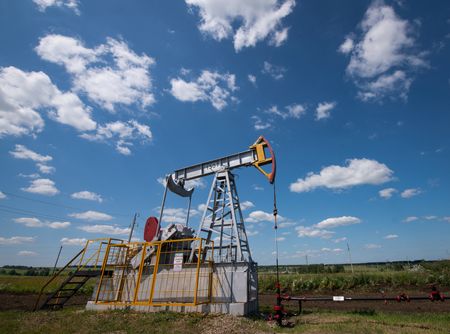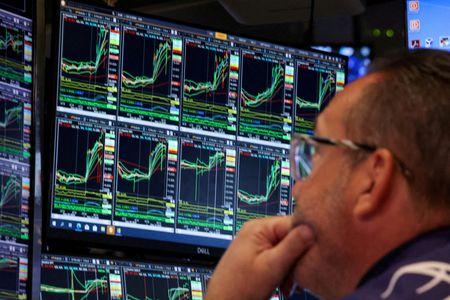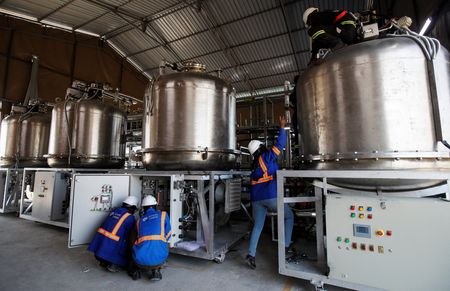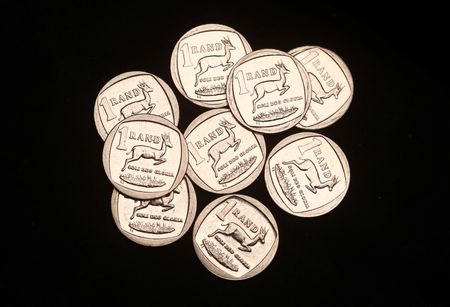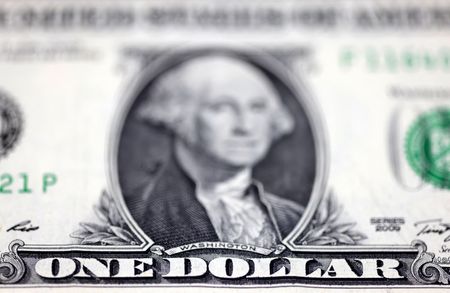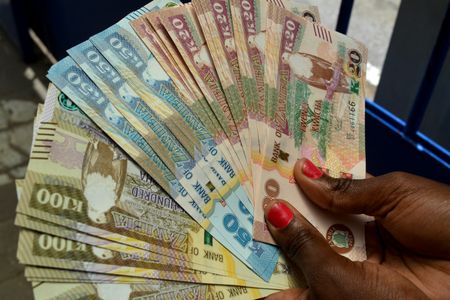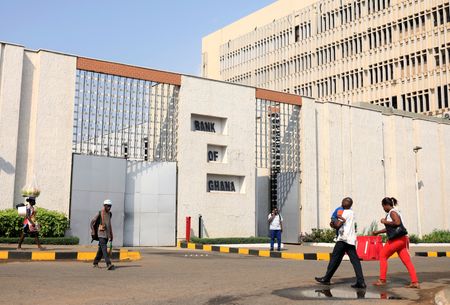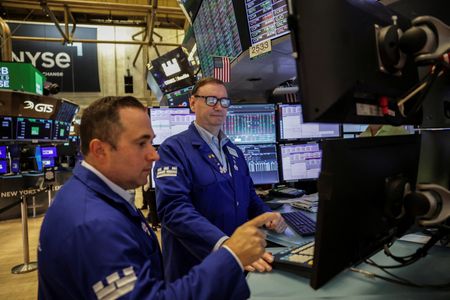By Erwin Seba
HOUSTON (Reuters) -Oil prices rose on Thursday after drones struck Iraqi Kurdistan oil fields for a fourth day, pointing to continued risk in the volatile region.
Brent crude futures gained 84 cents, or 1.23%, to $69.36 a barrel by 12:10 p.m. CDT (1710 GMT), while U.S. West Texas Intermediate crude futures jumped $1.04, or 1.57%, to $67.42 a barrel.
Officials pointed to Iran-backed militias as the likely source of attacks this week on the oilfields in Iraqi Kurdistan, although no group has claimed responsibility.
Oil output in the semi-autonomous Kurdistan region has been slashed by between 140,000 and 150,000 barrels per day (bpd), two energy officials said, more than half the region’s normal output of about 280,000 bpd.
“Some of the gains are reaction to drone attacks in Iraq,” said Andrew Lipow, president of Lipow Oil Associates. “It shows how vulnerable oil supplies are to attacks using low technology.”
Markets have also been jittery while waiting for the imposition of tariffs by U.S. President Donald Trump, which could shift oil supplies from the United States to India and China, Lipow said.
Trump has said letters notifying smaller countries of their U.S. tariff rates would go out soon, and has also alluded to prospects of a deal with Beijing on illicit drugs and a possible agreement with the European Union.
“Near-term prices (are) set to remain volatile due to the uncertainty over the final scale of U.S. tariffs and the resultant impact on global growth,” said Ashley Kelty, an analyst at Panmure Liberum.
The oil market was also reacting to a tightened inventory scenario, said John Evans, analyst at PVM Oil Associates.
U.S. crude inventories fell by 3.9 million barrels last week, government data on Wednesday showed, compared with analysts’ expectations in a Reuters poll for a 552,000-barrel draw.
Last week, the International Energy Agency said that oil output increases were not leading to higher inventories, which showed markets were thirsty for more oil.
“Oil thinking has been distracted from the Middle East, and the reminders of Israel’s attacks into Syria and the drone attacks on oil infrastructure in Kurdistan are timely,” Evans said.
Markets were continuing to look for signals of tighter supply or higher demand, said Phil Flynn, senior analyst for Price Futures Group.
Meanwhile, a tropical disturbance in the northern Gulf of Mexico was not expected to develop into a named storm as it makes its way west before moving onshore in Louisiana later on Thursday.
Rainfall totals in Southeast Louisiana are forecast to be about four inches (10 cm), according to the U.S. National Hurricane Center.
(Reporting by Erwin Seba in Houston, Seher Dareen in London, Anjana Anil in Bengaluru and Emily Chow in Singapore. Editing by Marguerita Choy, Kirsten Donovan)

